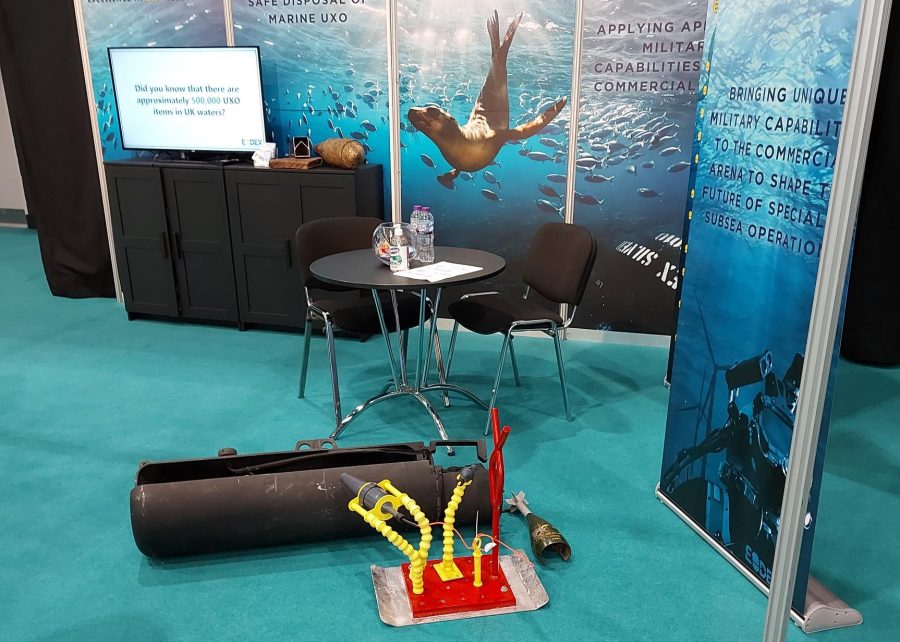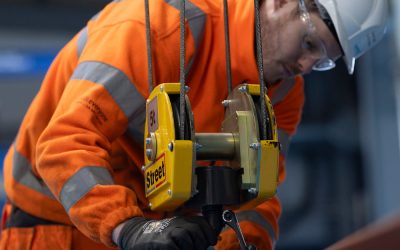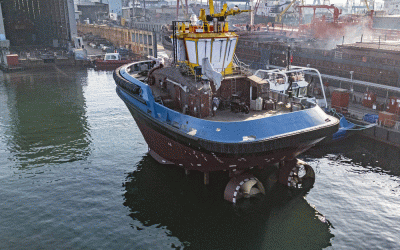EODEX, a UXO disposal specialist based in Aberdeen, UK, reports that it can offer “low order deflagration” techniques to neutralise mines and other munitions around developing European offshore wind sites, and is hoping to score more contracts within this sector.
The group’s disposal solution differs significantly from ‘high order’ techniques, which typically involve using large explosive charges to detonate the UXO where it sits. While this an effective method, as proven by a number of international navy missions, high order disposal can leave metallic debris in the water, scar the seabed with craters as big as 4-6m and cause harm to marine mammals as far as 25km away, EODEX tells Ship & Boat International.
Instead, the EODEX solution utilises a ‘bullet’, fired into the UXO. “This injects a low-density incendiary material into the munition and ignites its explosive fill, which then burns rapidly,” says EODEX. “The surrounding water then quenches the burn, leaving only a small amount of debris and a quieter sound, making it less harmful to marine life.” EODEX adds that its disposal tool often weighs just 100g or less.
Low order deflagration also protects the seabed from disturbance, though EODEX qualifies this with: “No procedure can be guaranteed to be 100% safe or effective…explosive ordnance disposal is an art, not a science.” Earlier this year, the company secured a contract to provide UXO disposal services in the Moray Firth, north-eastern Scotland, ahead of construction work on a 1.1GW wind turbine farm at this site. EODEX MD Andrew Woollven says: “We have a duty to minimise disturbance during these important maritime operations around our shores and protect our biodiversity.”




